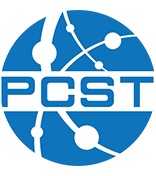Threat without efficacy?: Transforming coverage to engage the public during vector-borne disease emergence
Author: Linda J. Pfeiffer – Purdue University, USA, United States
Co-authors:
- Beth Forbes – Purdue University, United States
The range of mosquito-borne diseases are increasing with climate shifts simultaneously with the rise in insect resistance to known, and safer pesticides – resulting in decisions about how to balance the complex risk trade-offs of disease control and the socially imposed risks of pesticide exposure. The media play a key role in construction of these risk tradeoffs and in informing the public of the evolving science. The outbreak of Zika virus in Miami-Dade County (2016) illustrates a (missed) opportunity for journalists to utilize evidence-based messaging strategies to meaningfully translate the emerging threats, as well as to structure in efficacy cues to enhance uptake of protective public action. This study analyzed six months of regional media coverage of risk during Zika Virus outbreak in Miami-Dade County (2016) to identify: 1) media source utilization of threat frames across the risks introduced by the Zika crisis, 2) media source characterization of solutions to risk tradeoffs, and 3) how solution frames are paired with efficacy cues to enhance public uptake of protective health behavior. Our analysis revealed the differential role that key media sources take in framing threat and empowering informed public response during a public health crisis. Public health officials and politicians dominated coverage, while industry sources, scientists and the public found a lesser voice in the media. Overall, threat frames were utilized by key sources more than twice as often as solutions. Efficacy cues were absent on about half of these solutions. Of interest, efficacy cues were characterized primarily by directives for action or highlighted the negative efficacy of solutions. Negative or mixed efficacy cues far outnumbered positive efficacy cues when sources proposed solutions – decreasing the likelihood of public engagement with health protective behaviors. The implications of highlighting threat, while minimizing the efficacy of solutions in public health messaging are discussed.
The author has not yet submitted a copy of the full paper.
Presentation type: Individual paper
Theme: Transformation
